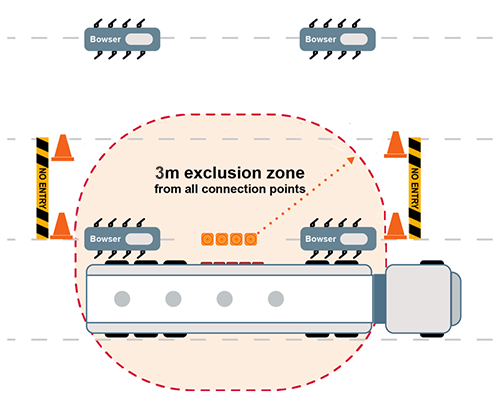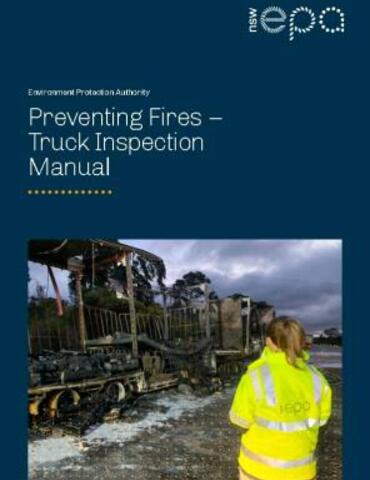Preventing truck and tanker fires
Truck inspection manual
More than 200 trucks catch fire every year in NSW with many of these fires being preventable. These fires endanger lives, and can cause water, land and air pollution, significant traffic delays, and often result in the destruction of the truck and its cargo.
The EPA and truck fire investigators have come together to create the Preventing fires – truck inspection manual (PDF 4MB) for people such as fleet operators, workshop managers and mechanics to assist them in identifying potential causes of truck fires and to help prevent them from occurring. The manual focuses on more than pre-journey checks and includes:
- guidance for drivers (PDF 832KB) to help them identify faults – such as overheating brakes and electrical faults that could lead to fires while in transit. This guidance also informs drivers about what to in the event of a fire starting.
- a checklist for mechanics (PDF 252 KB) to assist in vehicle inspections.
Transferring (unloading) petrol from tankers at petrol stations
The NSW Environment Protection Authority (EPA) is currently investigating alleged unsafe petrol transfer practices that have a high risk of spills, which could result in fires, pollution of waters, damage to property or risk to the safety of persons at a petrol station. These alleged high-risk and unsafe practices include:
- uncontrolled partial petrol transfers from tankers into underground storage tanks without sufficient capacity for the delivered load; and/or
- failing to calculate the ullage prior to commencing transfer.
On 10 July 2024, the EPA issued notifications to the fuel industry, reminding everyone involved in the transport of fuel that they are responsible for ensuring safe transport, including safe transfer of fuel at petrol stations. Read the media release on this notification.
Petrol is a dangerous good that releases a flammable vapour. This vapour forms a cloud which can explode if there is a source of ignition. Fuel delivery drivers should understand all aspects of the transfer process and make sure that the capacity of the receiving tank is calculated before commencing the transfer.
To minimise risk, when transferring petrol at service stations drivers must ensure:
- The transfer is monitored and controlled so as to prevent an overflow, spill, or excessive pressure in the tank.
- No tank is filled beyond the safe fill level (SFL), also known as normal fill level.
- Transfer hoses and tank connections are in good condition, and connections verified before transfer.
- Transfer hoses are inspected and tested in accordance with the Australian Code for the Transport of Dangerous Goods by Road and Rail (also known as the ADG Code).
- When transferring flammable liquids, especially in uncontrolled environments such as petrol stations, ignition sources must be excluded from hazardous areas.
Anyone transferring petrol must be given the appropriate training and instruction, or supervision, to perform it safely.
Penalties
Failing to take these steps is serious and could be a breach of one or more legal requirements, including criminal offences under the Dangerous Goods (Road and Rail Transport) Act 2008 and Dangerous Goods (Road and Rail Transport) Regulation 2022.
Exclusion zones must be created when a petrol tanker is transferring fuel
As petrol vapour can explode if there is a source of ignition, it is important to exclude sources of ignition from vapour clouds.
- All vehicles are sources of ignition.
- All sources of ignition must be excluded for a distance of 3m from hose connections while tankers are transferring fuel into storage tanks.
- The exclusion zone must be clearly marked with cones or other barriers that prevent vehicle entry.
- If the underground tank fill points are within the service area, the lane on the outlet side of the tanker must have bowsers shut down and be blocked off while the tanker is transferring fuel.

Penalties for not creating exclusion zones
- $400 penalty notice for tanker drivers
- $800 penalty notice for individual staff of petrol stations
- $4000 penalty notice for corporations operating petrol stations
- Much higher penalties can apply if the breach is taken to court.
Further information
Phone EPA's Environment Line on 131 555.
Download

Preventing fires – truck inspection manual Preventing fires – truck inspection manual
